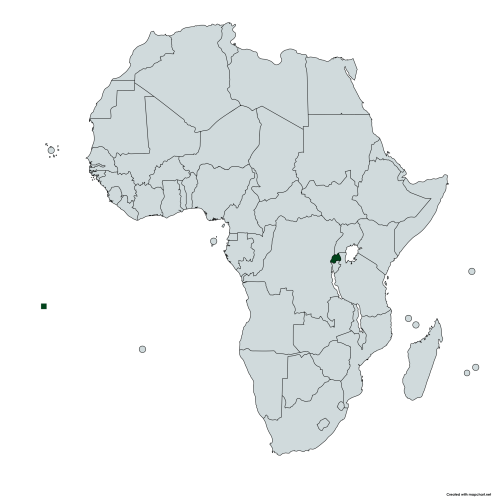Rwanda National Parks Safari – Gorilla Trekking, Big Five & Rainforest Wonders
Explore the wild heart of Africa in Rwanda’s spectacular national parks, where gorillas roam volcano-covered slopes, lions hunt the savannah, and chimpanzees swing through ancient rainforests. Rwanda offers an unforgettable blend of primate encounters, Big Five game drives, and eco-luxury lodges — all in one clean, safe, and welcoming country.
Let Annest Kenya Safaris craft your perfect Rwanda safari itinerary, complete with gorilla permits, expert local guides, and Muslim-friendly options.

🇷🇼 Why Choose a Safari in Rwanda?
Safe, stable, and incredibly scenic
Unique combination of gorilla trekking, savannah safaris, and rainforest hikes
Easy to combine with Kenya or Tanzania safaris
Excellent infrastructure, with luxury and budget-friendly lodges
Halal food, family-friendly options, and private guides available
Rwanda’s Top National Parks for Safari
Rwanda has three national parks, each offering a unique ecosystem and experience. You can visit all three in 5–7 days.

Volcanoes National Park – Gorilla Trekking Capital of Africa
Home to more than one-third of the world’s mountain gorillas, Volcanoes National Park is Rwanda’s crown jewel. Located in the Virunga Mountains, this misty forest is also where Dian Fossey conducted her research.
What to do:
Gorilla trekking (1-hour permit experience)
Hike Mount Bisoke or Karisimbi
Visit the Dian Fossey tomb trail
See golden monkeys and endemic birds
Popular Lodges:
🛏️ Bisate Lodge (Luxury)
🛏️ Sabyinyo Silverback Lodge (Mid-range)
🛏️ Da Vinci Gorilla Lodge (Budget)
Akagera National Park – Big Five Safari in Rwanda
Discover the Heart of African Wildlife
Want to see lions, elephants, giraffes, and hippos in Rwanda? Head east to Akagera National Park, a beautiful savannah park bordering Tanzania. Once devastated by conflict, it is now a conservation success story.
Top safari experiences:
Game drives to spot lions, elephants, rhinos, buffalo, leopards
Boat safari on Lake Ihema (hippos, crocs, rare birds)
Sunset game drives with bush dinner options
Lodges & Camps:
🛏️ Magashi Camp (Luxury)
🛏️ Ruzizi Tented Lodge (Mid-range)
🛏️ Akagera Rhino Lodge (Budget)


Nyungwe Forest National Park – Chimpanzees & Canopy Walks
Nyungwe is one of Africa’s oldest rainforests — a paradise for primates, hikers, and birdwatchers. Located in southwest Rwanda, it’s known for its dense biodiversity and cool highland climate.
Things to do:
Chimpanzee trekking at dawn
Canopy walk above the treetops
Spot colobus monkeys, orchids & butterflies
Waterfall hikes and tea plantation visits
Recommended Lodges:
🛏️ One&Only Nyungwe House (Luxury)
🛏️ Gisakura Guest House (Budget)
Best Time to Visit Rwanda for Safari
| Season | Months | Best For |
|---|---|---|
| Dry Season | June–September | Gorilla trekking, game drives, photography |
| Short Dry Window | December–February | Great for all parks, fewer crowds |
| Green Season | March–May, Oct–Nov | Lush scenery, best for budget & birdwatching |
Gorilla trekking is possible year-round but easier during the dry season.
Best Time to Visit Rwanda for Safari
3-Day Gorilla Trekking in Volcanoes NP

Day 1: Arrival in Kigali – Transfer to Volcanoes
Day 2: Gorilla trek + cultural visit
Day 3: Return to Kigali – city tour & departure
5-Day Akagera & Volcanoes Safari

Combine Big Five game drives with gorilla trekking
7-Day Rwanda Wildlife Circuit

Visit all 3 parks: Akagera, Volcanoes & Nyungwe
Perfect for nature lovers and primate enthusiasts
Rwanda Safari Lodges by Budget
| Category | Volcanoes | Akagera | Nyungwe |
|---|---|---|---|
| Luxury | Bisate, One&Only Gorilla’s Nest | Magashi Camp | One&Only Nyungwe House |
| Mid-range | Sabyinyo Silverback Lodge | Ruzizi Tented Lodge | Nyungwe Top View Hill Hotel |
| Budget | Da Vinci Lodge, Kinigi Guesthouse | Rhino Lodge, Karenge Bush | Gisakura Guesthouse |
We help secure gorilla trekking permits, book lodging, and arrange halal-friendly meals upon request.

Why Book Your Rwanda Safari with Annest Kenya Safaris?
Licensed safari operator with East Africa experience
Gorilla trekking permit assistance
Halal food and Muslim-friendly services
Tailored trips for honeymooners, families & groups
WhatsApp & email support before and during travel
+254-11458884
Chat with Safari Expert →
Request Free Safari Quote →
FAQs – Rwanda National Parks & Gorilla Safaris
Most nationalities require an eVisa, which can be applied online. East African Visa also allows travel to Uganda and Kenya.
Gorilla trekking permits cost $1,500 USD per person, valid for one trek. We assist with permit booking as part of your itinerary.
Yes — at Akagera National Park. Lions, rhinos, elephants, buffalo, and leopards are all present.
Absolutely. We ensure halal meals, prayer breaks, and modest lodging are available on request.
Book at least 4–6 months ahead for gorilla permits during peak season (Jun–Sep).

